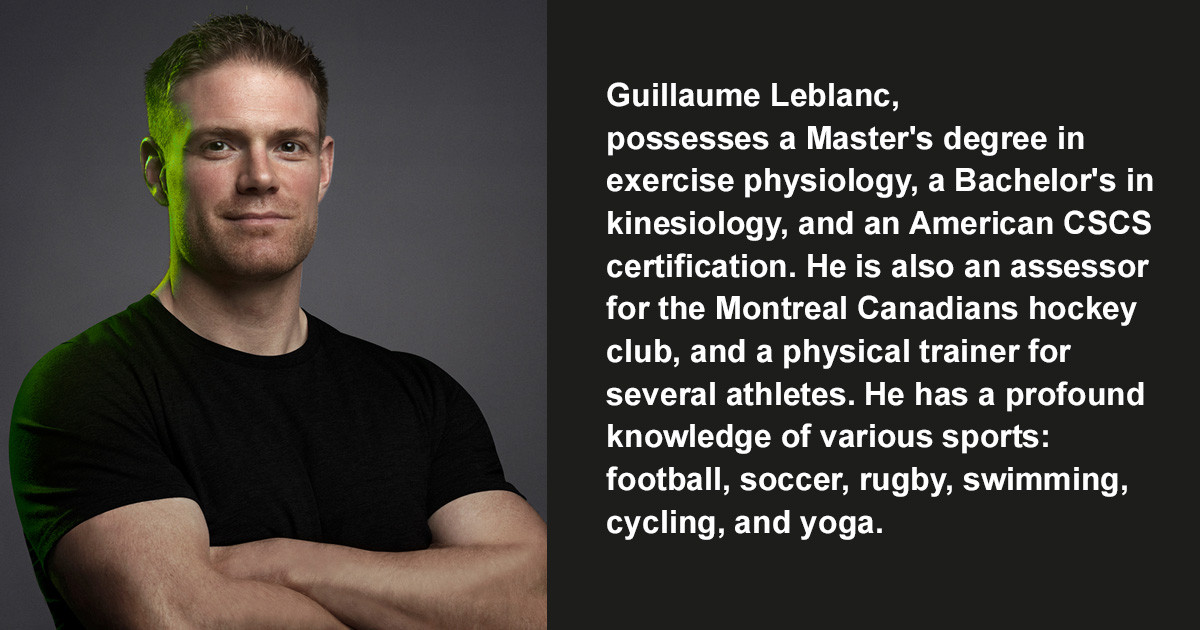Triathlon. Muscular exercises to prevent injuries.

Competing in triathlons is a serious business not everyone’s cut out for. Trainings for running, cycling, and swimming as well as their respective equipment all have their own particularities. Let’s delve into each of the components to learn to prevent injuries and maximize performance.
THE BIG THREE
Triathlon is a very demanding discipline that requires a lot of time and training. Indeed, triathletes must train for running, cycling, and swimming to improve their performance and continually shave seconds off their race time. Which means physical preparation calls for repetitive movements that can, over time, cause injuries. Furthermore, many triathletes neglect or fail to train specific muscle groups that are not isolated during the three traditional disciplines. In order to help prevent overuse injuries and enhance your performance, Studiogym has created 3 programs that require little equipment.
LET’S START WITH RUNNING AND CYCLING
Running and cycling have many things in common regarding muscle reinforcement planning. Both work the anterior chain muscles, which results in injuries to the knees, hips, and back. Although there is no foot to ground impact in cycling, it’s not unusual for these athletes to complain about foot pain. For runners, it’s a lot more common!
1-Stabilize the knee joint by training the adjacent muscles
Hamstrings: These posterior muscles allow you to bend your knees, but are considerably weaker than their antagonist, the quadriceps. This causes muscular imbalances and often leads to knee pains.
Balance training: Doing lunges with a BOSU or unstable surface allows to strengthen the stabilizer muscles of the knee.
Studiogym recommends this exercise:
2-Unilateral training
You probably have a leg that’s stronger than the other. Which means you have a tendency to push/pull harder with it. Now, think about how many times you repeat that movement during a run or bike ride… it’s important to balance everything out. You can opt for unilateral exercises and focus on your weaker limb.
Studiogym recommends this exercise:
3-Back pain
The hunched over position of cyclists and the foot to ground impact of runners can cause significant muscular tension on the lumbar region.
Gluteus medius: This muscle is often forgotten during the training of cyclists and runners because most exercises require minimal effort from it. However, the gluteus medius helps to stabilize the pelvis and release tension on the lumbar region.
4-Internal rotation of the shoulders
The hunched over position of cyclists and the muscular fatigue of runners cause the internal rotation of the shoulders. This can result, over time, in neck and upper back tension. To prevent this problem, it is important to incorporate to your training exercises that target the external rotators of the shoulders, such as the teres minor and infraspinatus muscle.
5-Don’t forget to stretch
One last thing not to neglect is stretching. Repeated hip flexions can cause muscles to shorten, especially the iliopsoas. One of its components, the psoas major is attached to the last thoracic vertebrae and the first four high lumbar vertebrae. Since this muscle is almost continually contracted during running and cycling, it can cause lumbar pain.
6-Iliotibial band
This muscle going from the hip to the knee is often very tense in athletes and can cause knee pain.
Studiogym recommends this exercise:
AND NOW SWIMMING
Naturally, all of the aforementioned points are also important for swimming. For instance, one of your legs may kick harder than the other during crawl and your iliopsoas muscles may be tense. Our advice on other disciplines can also be beneficial for swimmers.
However, swimming motions, especially the crawl, are different from running and cycling because they also work the thoracic region. Studiogym recommends the following exercises to improve your crawl performance.
1-Start by activating your muscles: In order to maximize training, it is important to activate your muscles and work their range, especially those that affect the shoulder blades.
2-Train the lats and serratus: Those muscles work extremely hard during the crawl.
3-Strengthen the rotator cuff and high posterior chain: During crawl, you must raise your elbows to stick your arm out of the water and reach out further, working the muscles of the rotator cuff and high posterior chain.
https://studiogym.com/exercises/5a81b3babd649f08148b4697-rear-delts-raise-with-rings
https://studiogym.com/exercises/5c3dfa2c0e9ad1f8518b4605-external-rotation-and-press
4-Train your core: Strong abs are essential to swimmers. But you cannot train your core by simply doing sit-ups. In fact, you must target specific muscles, like the obliques and the transverse abdominal muscle. Those muscles allow for abdominal stability, synergy with the lumbar muscles, and trunk rotation.
5-Stretching! Now that you have trained your lats, obliques, and high posterior chain, you must also stretch them. Here are the exercises:
Although triathletes must devote several hours of their training time to cardiovascular exercises, it is essential to incorporate sessions of strength training that target specific muscles in order to prevent overuse injuries. The aforementioned advice will help athletes to obtain a more balanced body that can reach the finish line faster.

Advertising